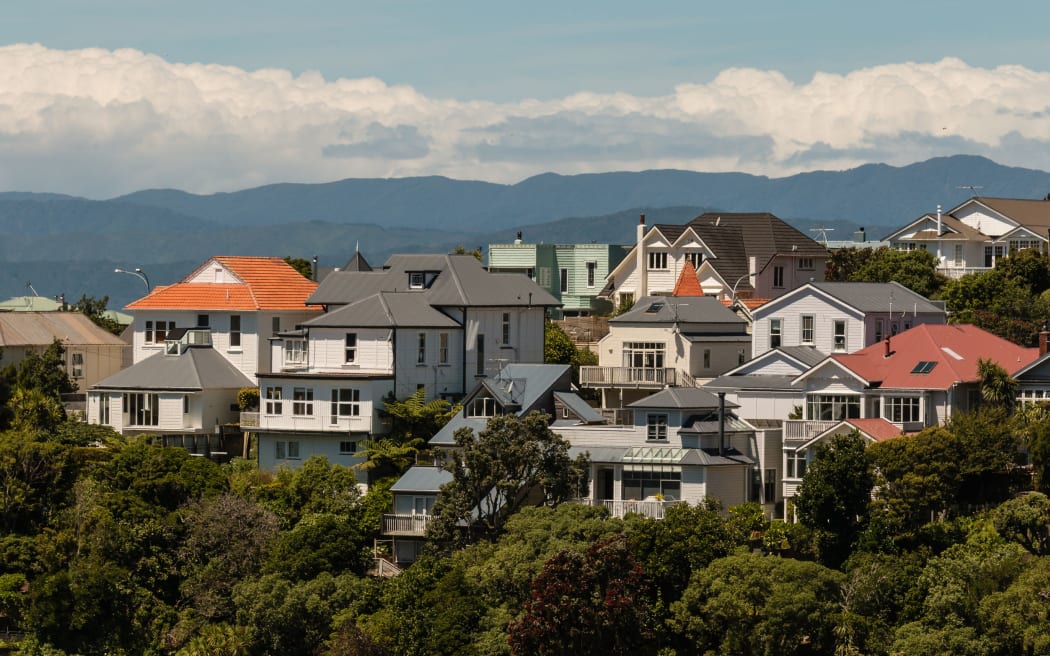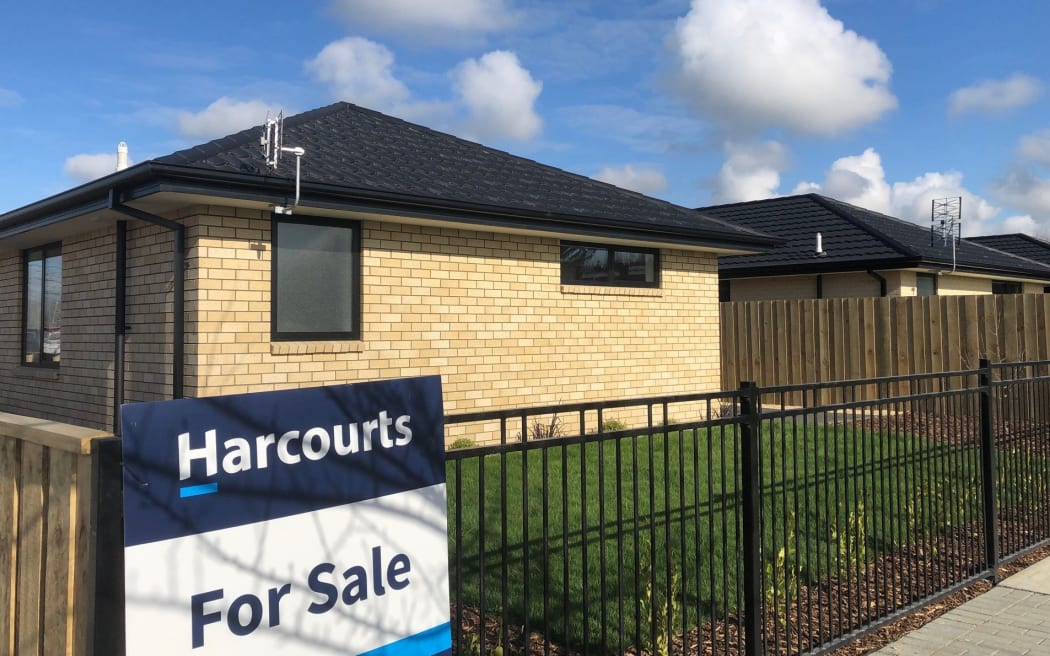
QV figures show the largest drop in house prices has been in Wellington. Photo: 123RF
Explainer - House prices are continuing to drop at the same time interest rates are climbing.
So what does that mean for homeowners, those looking to sell and buyers? And which areas have seen the steepest dip in house prices?
RNZ is here to clear it all up.
Prices continue to drop
House prices continued to drop in November making it the largest year-on-year drop since the Global Financial Crisis (GFC).
Rising interest rates and falling prices and sales are making the housing market more uncertain, according to the Real Estate Institute (REINZ).
The institute's House Price Index, which measures the changing value of residential property, fell 13.7 percent in November on the year before, when the market was at its peak.
It said the median house price dropped $10,000 to $810,000 from October, with prices down 12.4 percent on a year ago.
Meanwhile, Quotable Value's house price index for November showed that the decreases in houses prices had slowed - falling 2.9 percent nationally over the three months ending in November, in contrast with the 3.9 percent quarterly reduction reported at the end of October.
Its index found the average house value to now be 10.2 percent lower than at the start of 2022, coming in at $945,568 with a reduction in price of $107,747.

It was a good time for buyers if they could make the finances work, REINZ chief executive Jen Baird said. Photo: RNZ
Which regions are taking the biggest tumble?
QV said house prices had fallen most significantly in New Zealand's main urban centres in 2022.
It said the largest drops have been Wellington (-18.7 percent), Palmerston North (-14.5 percent), Hastings (-12.5 percent), Auckland (-12.2 percent), Napier (-12 percent), Dunedin (-11.5 percent), Hamilton (-11.3 percent) and Tauranga (-9.3 percent).
Wellington has ranked bottom of the index for 12 consecutive months, REINZ chief executive Jen Baird said.
But they were seeing positive indicators in the House Price Index (HPI) that the intensity of downward pressure on property value was easing in the region, with Wellington being the sixth best performer at 2.1 percent, she said.
Auckland had the second greatest decrease in HPI movement, with an annual decrease on the index of 18.4 percent.
Which regions are more resilient
The QV house price index showed Queenstown to be the only region showing a positive home value growth for the year (5.4 percent).
Although still dropping, QV said Marlborough (-1.3 percent), New Plymouth (-2.2 percent) and Christchurch (-3.3 percent) were the next most resilient regions.
While Trade Me property sales director Gavin Lloyd said not every region saw property prices tumble in November on their index either.
"Northland (+12 percent), West Coast (11 percent) and Taranaki (+10 percent) bucked the trend with their average asking prices jumping by more than 10 percent year-on-year last month."
And REINZ found the West Coast achieved a record median price, up 20.0 percent annually to $420,000, and Southland reached an equal high (last reached in February 2022) - up 10.5 percent annually to $475,000.
Median house prices softening
Baird said property prices had softened.
Agents were reporting hesitancy amongst buyers, but there were signs sentiment was shifting.
"Agents around the country say sellers are realistic, they are meeting the market, they are entering negotiations."
In November, REINZ recorded 5525 sales.
A 'good time' for buyers
"If you can make the finances work, this is a good time to be a buyer," Baird said.
There was significantly more stock on the market and the market was less competitive, owner-occupiers remained a strong presence, and investors had largely stepped back - for now, she said.

Jen Baird. Photo: Supplied
For those sidelined by the frenzied 2021 market, with house prices down 12.4 percent, now was a great time to take another look at what was out there, Baird said.
"It's been a crazy couple of years in real estate with massive growth followed by a pretty significant correction," QV chief operating officer David Nagel said.
The last time anything similar was seen was after the Global Financial Crisis in 2008, he said.
"But that was an entirely different kettle of fish to what we're going through right now.
"The market was behaving in a generally orderly fashion until that point, with gradual, sustainable growth - whereas the growth we saw during the first two years of the Covid-19 pandemic was far from gradual and sustainable.
"Home values increased by nearly 30 percent nationally in 2021. In 2022, they've fallen by less than half that much on average, so there's clearly still some way to go until we're back at pre-pandemic levels.
"Fortunately, our economy hasn't taken a hit like it did in 2008, so unemployment remains very low - at least for now."
How the OCR and interest rates are affecting house prices
"In late November, the Reserve Bank of New Zealand (RBNZ) raised the OCR by a record 75 basis points to 4.25 percent. The central bank also forecasts a peak of 5.5 percent next year and predicts a further rise in inflation," Baird said.
The immediate effect on the real estate market was more hesitancy, she said.
"Buyers are again weighing up the likely impact on mortgage rates with current downward pressure on property prices. Those thinking of selling are again looking at the market and asking 'is this the right time?'"
Rising interest rates combined with an increase in the cost of living would continue to make life tough for homeowners, Nagel said, "especially the highly leveraged and those who purchased at the peak of the market".
The average rate of decline continued to slow in the lead-up to Christmas, he said.
But with talk of a recession, "we can expect further downward pressure on prices well into 2023 before we might eventually see the market bottom out later in the year".
Supply and a waiting game
Lloyd said there were more properties for sale than in any other month on record in November. "Now is typically when we see the market really take off and despite prices falling, this year is no exception."
On the other hand, Lloyd said demand had slowed down nationwide.
"These supply and demand changes really show us how the market has been flipped on its head. After years of seeing supply failing to keep up with sky-high demand, we're now seeing the total opposite. Demand has fallen off while supply is skyrocketing, and prices are tumbling as a result," he said.
"It appears buyers are waiting to see how far prices will fall, before they make a move."






